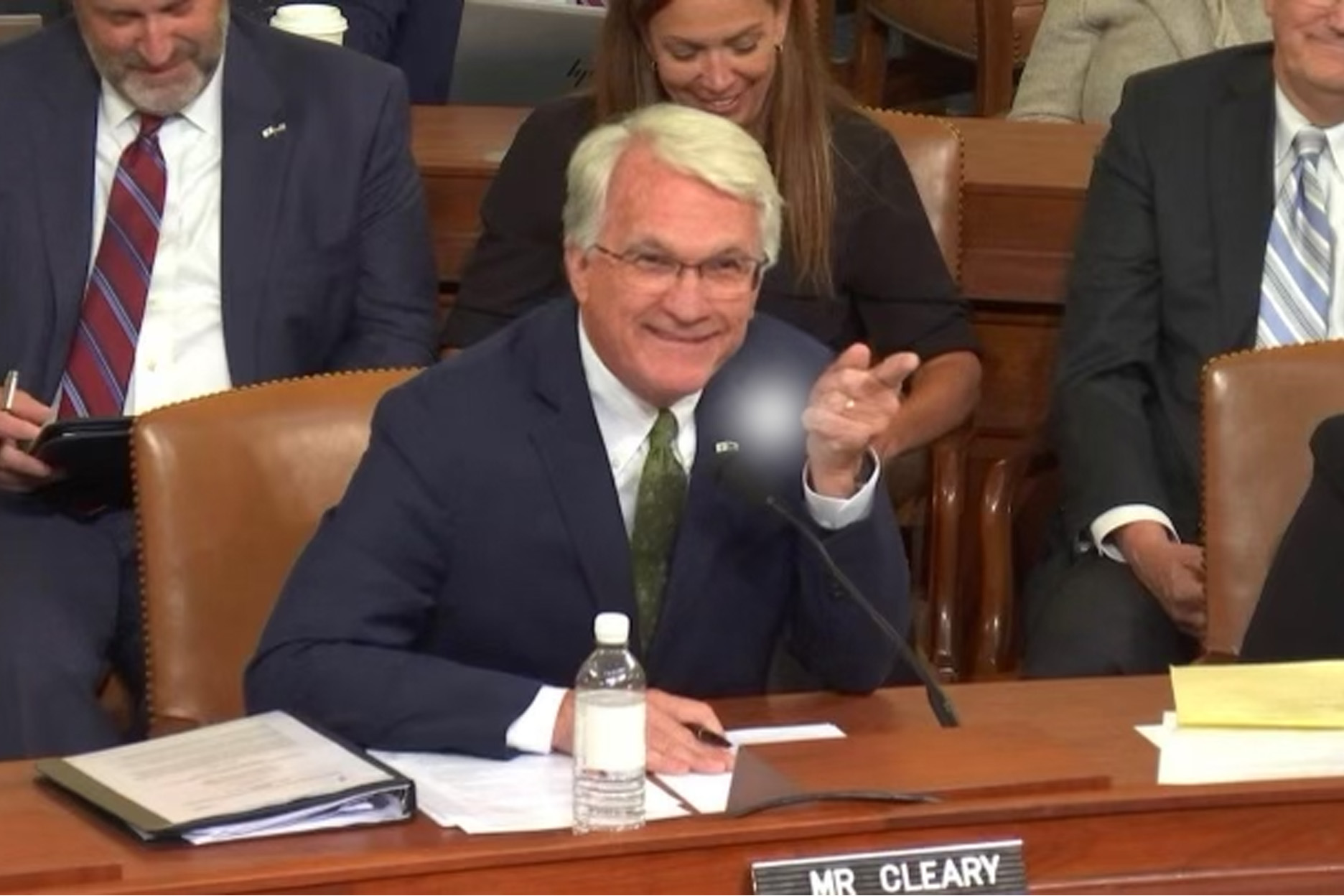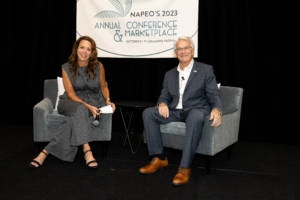

I first met Pat Cleary way back in the 1990s, when I was a young up and comer at the National Association of Manufacturers (NAM). As a director of media relations and communications, I had been assigned as the “press person” (as we called it back then) for the human resources policy department, which did all the lobbying and policy work on labor and employment issues, healthcare, benefits, etc. Pat was in charge of the department, and I know it won’t come as a shock to readers that he was fully on board with doing anything I asked him to do with regard to the media.
He was a PR flak’s dream. Name an issue, he would comment on it. Name an interview time, he would be there. Name a regulation, he knew something about it. On everything from OSHA ergonomics rules to obscure healthcare regs, we had a blast generating as much attention as possible for NAM’s priorities and newsworthy business issues. It was during this time that I learned one of the most important lessons of my life: Never, ever get between Pat Cleary and a camera or, as you all have learned, a microphone.
I left the NAM after more than 10 years, but Pat continued on there, rising through the ranks before going to Fleishman Hillard to head up the firm’s digital public affairs practice in D.C. And then he achieved his goal of becoming an association CEO, landing the CEO job here at NAPEO in late 2011. We had remained friends through the years, so eight months into his tenure, Pat called me to see if I might be interested in closing up shop as an association communications consultant to come work with him full time. I was.
Since then, I’ve had a front row seat for Pat’s triumphs and challenges in his role as CEO. Under his leadership, the PEO industry has grown and revenue has quadrupled, spurred by three major events that occurred during his tenure at NAPEO:
- The implementation of Obamacare, which was the straw that broke the camel’s back for many businesses that had been managing HR and benefits on their own, driving many of them to PEOs.
- The passage of the Small Business Efficiency Act in 2014 that created the IRS’s Certified PEO program and brought renewed legitimacy and attention to the industry.
- The COVID-19 pandemic, which spawned various government initiatives and the expansion of remote work, solidifying the role of PEOs as integral business partners for small and mid-size businesses.
While even Pat wouldn’t try to take full credit for those three events (would he?), there are several other things he did directly implement at NAPEO that also played a critical role in driving the tremendous growth we’ve seen in the industry over the last 11 years. Most importantly, it was shifting NAPEOs focus from internal to the outside world.
He recognized right away that the biggest obstacle for PEOs was the lack of awareness among small and mid-size businesses that an industry even existed to help them with the administrative and HR challenges that took time and focus away from the business of running their business.
The first step was to get accurate data on the size and impact of the industry. Thus was born NAPEO’s white paper series, which has become the de facto source for information and data on PEOs. It has been quoted on the House floor, is immortalized in numerous federal and state regulations, and pops up frequently in news stories. The data has also been a goldmine for salespeople, who undoubtedly have used it to generate thousands of sales through the years. It has become the foundation of much of what we do on behalf of the industry.
The next step was to go to potential clients themselves, to find out their top business concerns and match those up with the things that PEOs do. These focus groups helped us identify what we needed data on, so that we could deploy our economists to do research on topics like how working with a PEO impacts growth, business survival, employee satisfaction, benefits offerings and more. Armed with this data, we were ready to move on to the next step, which was a national advertising campaign aimed at small businesses, highlighting the empirical benefits of using a PEO.
The result was impactful and undeniable: Industry awareness rose by 44% in just four years and the profile of the industry has increased as well, boosted not only by advertising but also other Pat-led initiatives such as partnering with associations like the U.S. Chamber, exhibiting at the trade shows potential PEO customers attend, expanding our social media presence, and creating video content highlighting PEO expertise on key business pain points. But nothing has been more indicative of the progress we’ve made than this year’s inaugural National PEO Week in May, a momentous achievement for the industry which was blessed by Congress and made official by the National Day Organization.

Kerry Marshall and Pat Cleary speak during NAPEO’s 2023 Annual Conference & Marketplace.
Perhaps even more impactful to the industry has been Pat’s influence on our approach to government affairs, particularly at the federal level. Gone are the days of the bunker mentality that was a vestige of the early days of the industry. We have been proudly telling the PEO story to legislators and regulators and leveraging our role as a critical ally for small businesses, and it has been paying off. We have relationships with lawmakers that help us advance our priorities. We have people we can call to help us when we need it, as we did during the rollout of PPP loans in 2020. We have legislators who know what a PEO is and why it’s so important to support PEOs. This approach is the reason why, when the House Ways & Means Committee’s Oversight Subcommittee needed someone to provide the business perspective on the impact of IRS delays in processing ERTC claims, they didn’t call on someone from the Chamber or the NFIB, they called on NAPEO, creating another seminal moment for the industry.
As proud as Pat is of that testimony, I know he would say that the achievement he is most proud of during his time as CEO is the staff culture he has created. It is pretty great, full of support and laughter and collaboration and joy. We really like each other and care about each other. Our Thursday team lunches highlight how much we all like being together, and that is a direct result of the environment Pat has created, the tone he sets in our workplace, and the kind of person he is.
The conversation I had just today with Pat perfectly captures what kind of person he is. “I have to buy a lottery ticket today, it has been my lucky day,” he said. When I asked why, he said that he had finally seen his friend Leon, who panhandles outside the Harris Teeter grocery store, and he was so happy to talk with him again and hear that he is doing fine. Once inside the store, Pat had run into a Harris Teeter employee he’s gotten to know through the years, who joyfully informed him that she was pregnant after years of struggling with infertility. Pat said he gave her a big hug and had tears in his eyes, he was so happy for her. It was such a typical Pat story, and it highlighted something really important about him.
The interest Pat takes in the lives of the people he comes across, the care he takes with their stories and their feelings, and his joy in making those connections not only impacts their lives for the better, it is profoundly meaningful to him. It’s what fuels his soul.
In the end, I know that it’s much more important to Pat to have left his mark on the world by being a good person rather than by being a good CEO. Lucky for us, he’s been both.
-
SHARE
- Copy to clipboard


